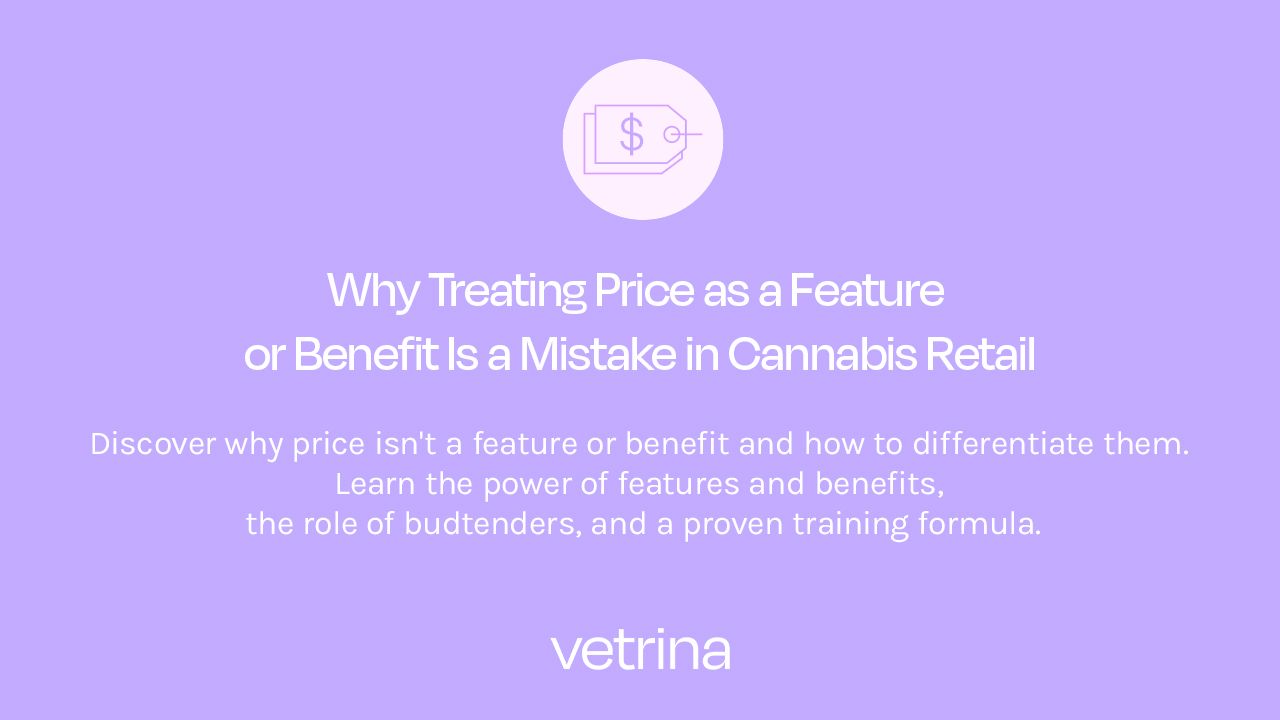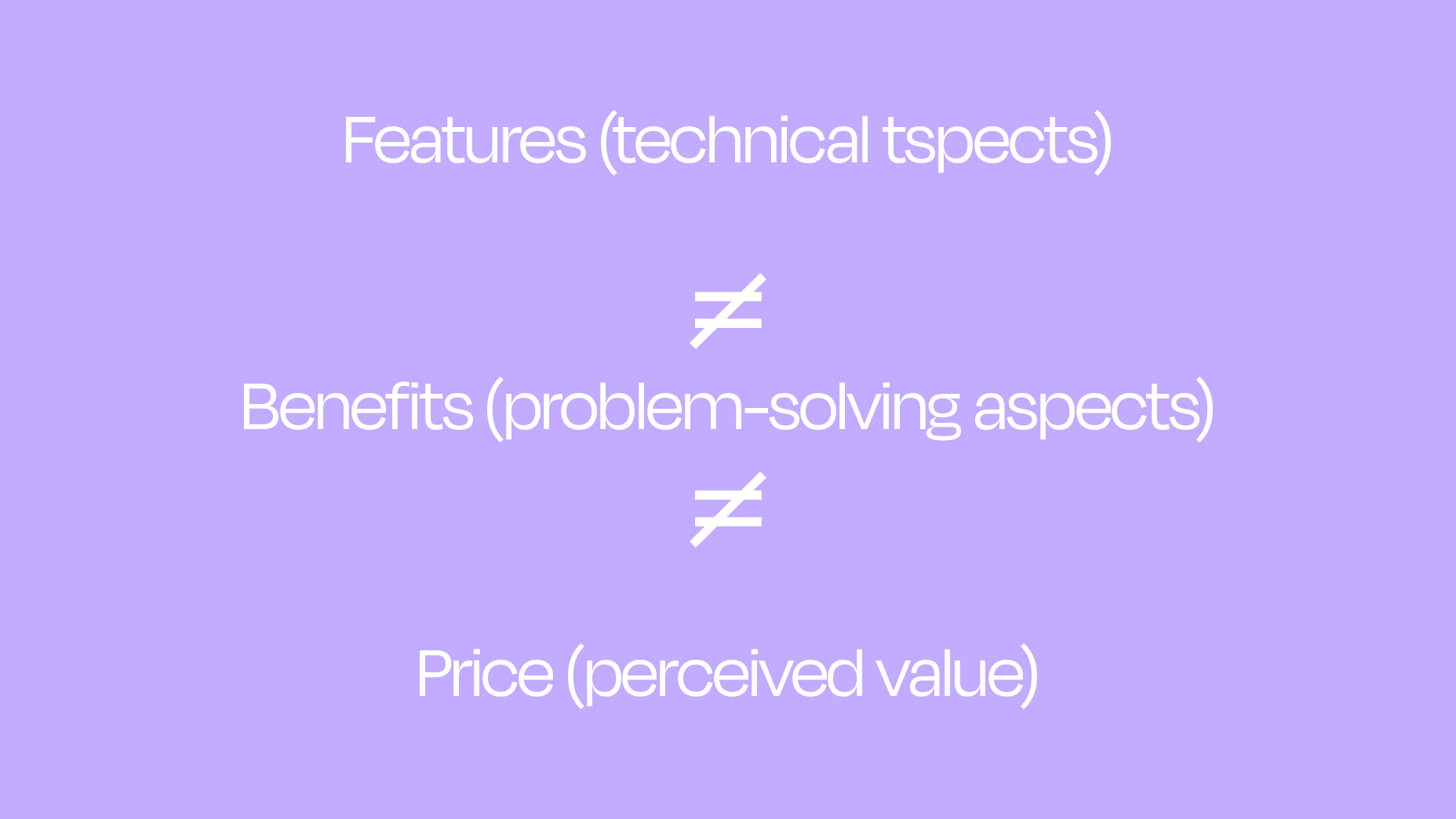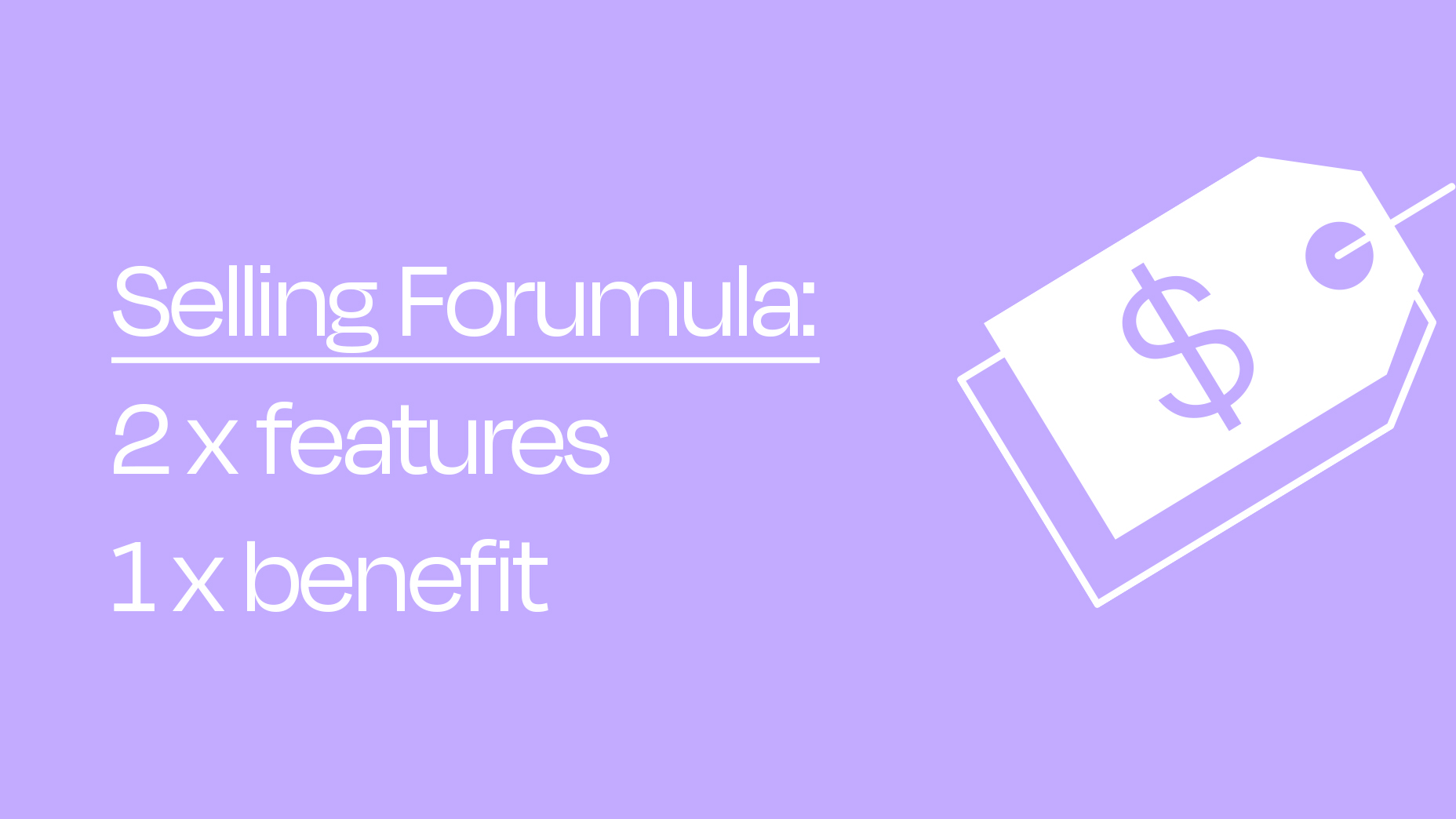
Why Treating Price as a Feature or Benefit Is a Mistake in Cannabis Retail
Oct 09, 2023At Vetrina, one of our core competencies is to help our clients with marketing and sales, and one common misconception looms large – the tendency to treat price as a feature or benefit of a product. Take a stroll through the bustling aisles of a cannabis dispensary, and you'll often hear budtenders unintentionally falling into this trap. It's not unique to the cannabis industry; this blurring of lines between price, features, and benefits is a challenge faced by businesses across various sectors.
Imagine walking into a store, and the first thing you hear about a product is that it's the "lowest price in town." It's tempting to believe that this affordability is a notable product feature. Or perhaps you've come across marketing campaigns that proudly proclaim a product as "budget-friendly," giving you the impression that its cost-effectiveness is a fundamental characteristic. But here's the catch: these claims are not features, nor are they benefits in the truest sense. They are, in fact, reflections of pricing strategies or competitive positioning.
Consider this blog your guide to deciphering the art of effective product marketing and sales by unravelling the mystery behind price, features, and benefits. We'll explore why these distinctions matter and how understanding them can help you create more compelling and value-driven messages that truly resonate with your customers. So, the next time you step onto the sales floor or browse online for products, you'll be equipped to discern what's truly valuable, beyond the enticing allure of price.
Features vs. Benefits: What's the Difference & Why It Matters

Before sending your salesperson into a store or budtender out onto the retail floor, let's clarify what you are asking them how to sell. The first step is understanding the difference between a feature and a benefit. In reality, this distinction often gets mixed up.
Features: Features refer to the distinctive, inherent attributes or specifications that define its physical or technical composition. These are the clear and measurable features that make the product different from other options available in the market.
Think size, materials, functions, and any unique components or capabilities that contribute to the product's identity and utility.
For example, in the case of a smartphone, features might include screen size, processor speed, camera quality, operating system, storage capacity, and other technical specifications that differentiate it from other smartphones. If you are buying a phone, you can easily line up two lists and compare features.
It is important to know what features are as they give a starting point for comparison and decision-making when choosing a product
However, it's important to note that features, while significant, represent only one aspect of a product's value proposition, with benefits being another critical component in influencing customer choices.
Benefits: Benefits, on the other hand, are the real-world advantages and positive outcomes that customers gain from using a product. Unlike features, which define a product's technical composition, benefits explain why those features matter and how they directly address customer needs or problems.
Think of benefits as the compelling reasons why someone would choose your product. These reasons go beyond the product's technical specifications and tap into the emotions and desires of your target audience.
For instance, if you're selling a high-quality smartphone, the benefits could include:
- Improved Productivity: A faster processor and ample storage capacity lead to smoother multitasking and increased productivity.
- Capture Precious Moments: A top-notch camera allows users to capture high-quality photos and videos, preserving precious memories.
- Seamless User Experience: An intuitive operating system enhances the overall user experience, making the phone easy to use for people of all tech levels.
Benefits are what resonate with customers on a personal level, addressing their pain points and aspirations. They are the driving force behind their purchasing decisions.
You are creating an emotional connection with customers, highlighting how the product can improve their lives or solve their problems. Benefits, in conjunction with features, provide a holistic view of a product's value proposition, guiding customers toward informed and confident choices.
To recap:
Features (Technical Aspects):
- Observable and measurable attributes.
- Inherent characteristics of the product.
- Describe "what" the product is or does.
- Often listed in product specifications.
- Help customers understand the product's composition.
- Examples: Screen size, processor speed, ingredients, and design.
Benefits (Problem-Solving Aspects):
- Address specific customer needs or problems.
- Explain "why" the features matter to the customer.
- Emphasize the positive outcomes or solutions.
- Focus on the value a product provides to the customer.
- Connect emotionally with the customer's desires.
- Examples: Pain relief, improved sleep, energy boost, and convenience.
Now, do you see anywhere on the list price? So why does it often become the ‘go-to’ strategy for selling a product?
Budtenders and Selling in Cannabis Retail
Budtenders serve as the frontline ambassadors for cannabis brands and retailers, playing a pivotal role in the sales process.
To start moving away from using price as a substitute for features and benefits, start by listening to them sell to give you an understanding of of what their default selling style is.
Are they rushing to introduce price prematurely? This will quickly shift the focus away from the product's features and benefits, as it becomes difficult to back peddle.
Leading with price risks reducing the conversation to a mere price comparison, overlooking the opportunity to address individual needs and showcase the unique benefits of each product.
Price Used as a Misconceived Feature
Price is often mistaken for a product feature because it leads to a quicker decision. It plays a crucial role in purchasing anything, including cannabis. Many of us have browsed home listings and made a snap decision based on a listing price, without even reading the features (such as the number of rooms or property size). We do the same when we walk into a retail store!
This misunderstanding comes from the idea that the price or cost is a natural characteristic of the product itself.
But the reality is that price functions as a reflection of a product’s perceived value.

How Price Reflects Product Value In Cannabis Retail
Just as in other industries, the price of cannabis products conveys a clear message about their perceived value to consumers.
Price acts as a mirror, showing how much value a product has to consumers. When a product has a higher price, it tells customers that it may have added benefits or advantages. These can include things like better quality, special features, great craftsmanship, or exclusive experiences.
Products with higher prices often indicate that they are a top choice for people who value quality or unique features. There is an assumption that these products invest in research, development, and quality control to provide a satisfying and high-performing experience that justifies the higher price.
As a result, customers are willing to pay more when they believe that the product's benefits match their needs, preferences, or desires.
Basically, the price of a product is not random; it's a clear sign of the value it offers. Knowing this helps consumers make smart decisions and helps businesses position their products based on their unique value.
🔗 Learn more about perceived value and discounting in our blog: Value Payoff Dilemma: The Psychology of Discounts and Perception
The Magic Training Formula to Selling Cannabis Features and Benefits
At Vetrina, we have a "magic sales" formula designed for budtenders. This tool is both easy to remember and easy to execute, helping budtenders avoid defaulting to price when interacting with customers on the retail sales floor.
Introducing the "2 Features, Then 1 Benefit" Formula:
The "2 features, then 1 benefit" formula is a simple yet powerful approach to selling or educating about cannabis products. It provides budtenders with a way to avoid defaulting to price and instead always focus on helping customers make informed choices by highlighting the product's features and benefits.

Guiding Customer Interactions and Encouraging Engagement:
Why does it work so well for Vetrina cannabis retail clients? it encourages engagement because it's structured, informative, and customer-centric.
It provides customers with enough information to pique their interest and invite questions, opening a conversation between budtender and customer. Rather than overwhelming with too much technical detail or pushing a hard sell, it invites curiosity and allows customers to explore the product's value at their own pace.
Examples of Effective Application:
Let's illustrate the power of this formula with a few examples:
Example 1 - Selling a Vape Pen:
- Feature 1: "This vape pen has a long-lasting battery that can go for hours."
- Feature 2: "It's designed with a sleek and compact form for easy portability."
- Benefit: "This means you can discreetly enjoy your favourite strains on-the-go without worrying about frequent recharging."
Example 2 - Promoting a CBD Tincture:
- Feature 1: "Our CBD tincture is made from organically grown hemp."
- Feature 2: "It's available in various strengths to suit different needs."
- Benefit: "This allows you to experience the effects of CBD with the assurance of quality and the flexibility to choose your ideal potency."
By using the "2 features, then 1 benefit" approach during customer interactions, budtenders and sales teams can effectively explain the value of cannabis products. This approach allows them to have meaningful conversations with customers and assist them in making informed choices based on their needs and preferences, without solely focusing on price.
Tips for Retailers and Brands
Retailers
- Prioritize Product Education: Invest in ongoing training for your budtenders. Make sure they fully understand your product features, benefits, and how they meet customer needs. This can mean either a formal learning session, coach-in meetings to practice before they start, or time off the floor to access brand learning resources.
- Promote Customer-Centricity: Help budtenders practice using the "2 features, then 1 benefit" formula when engaging customers. This over time will become a habit that helps customers receive information in a structured and engaging way, which builds trust and helps them make informed decisions.
- Tailor Recommendations: Tailor product suggestions to match each customer's unique needs and preferences. The cannabis market is diverse, and offering personalized recommendations can foster customer loyalty.
- Quality Assurance: Maintain high standards in product quality and consistency. Consistently delivering on the promised benefits of your products is essential for building trust and a positive brand reputation.
Brands
- Emphasize Benefit-Centric Messaging: When crafting marketing materials, focus on the benefits your cannabis products offer. Highlight how they solve problems, enhance experiences, or improve well-being to create more relatable and compelling messages.
- Know Your Audience: Conduct thorough market research to understand your target audience's unique needs and preferences. Tailor your product development and marketing strategies to align with their specific pain points and desires.
- Visualize the Benefits: Use imagery and visuals to vividly depict the benefits of your products. Show how they fit into consumers' lives, whether it's through relatable scenarios or images of satisfied customers. Just keep in mind your local cannabis marketing laws.
- Educate and Inform: Develop educational content that explains the science and value behind your products. Whether through blog posts, webinars, or workshops, educating consumers and retailers on the benefits of your products can set your brand apart.
By using these suggestions, cannabis retailers can create an informative and customer-focused space, while cannabis brands can effectively share the advantages of their products, ultimately improving customer happiness and loyalty in the competitive cannabis market.
If this blog has you jotting down product features and benefits for your team to learn make sure to subscribe to our newsletter as we continue to share expert insights you can action.
Tactical insights to become
a Cannabis Retail Insider!
Access expert insights in one easy-to-digest
and follow-along newsletter.
We hate SPAM. We will never sell your information, for any reason.

